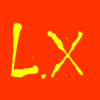
polar graph :: scatter to contour
About drawing polar contour based scatter date (radial, Angle, image_z, waves stored in table0).
In igor I convert them into matrix using <XYZtoMatrix>.
I also used origin to plot the same data. the screenshot is "polar_contour_in_origin".
My question si why the two results are different ?
In igor, interpolated results don't seem to be what I want.







first create x and y waves from your radius and angle.
Then create an empty polar graph with Igor 9.05.
From the graph menu, choose append contour, but make sure you choose the HorizCrossing and VertCrossing axes.
From the Modify Contour Appearance dialog, choose Fill Contours.
Open the Modify Polar Graph panel, switch to the range tab, and set the radius and angle ranges to match.
November 16, 2023 at 03:10 pm - Permalink
Thank you for your advice.
Sorry, I didn't make myself clear.
What I mean is why do the two programs plot differently based on same data?
Which one should I trust?
November 16, 2023 at 06:32 pm - Permalink
hello, Jim
follow your advice:
Will this get the right results?
what am I missing?
November 16, 2023 at 06:50 pm - Permalink
In reply to Thank you for your advice. … by Qianlix
[quote=Qianlix]
What I mean is why do the two programs plot differently based on same data?
Which one should I trust?
[/quote]
I don't know anything about Origin, but it looks like the Origin graph has the text "Speed mode is on", which might indicate that it's downsampling your data or otherwise altering the representation of the data in order to make the drawing faster. You might try turning speed mode off before you compare the plots.
November 17, 2023 at 06:30 am - Permalink
I've attached my implementation of what I think you are going for (a polar image not a contour).
After creating the interpolated image, I used the Modify Polar Graph panel's Append Image button (requires Igor 9.05) to select the created image matrix, and then adjusted the polar graph axes ranges and other settings (angle direction and angle 0 location) to match the image's angle direction and angle 0 location specified in the ImageFromPolarCoordinates macro.
See the .png attachment for the result.
For those that don't want to download the revised experiment, I implemented the following code to convert from polar to rectangular followed by ImageInterpolate:
November 17, 2023 at 01:41 pm - Permalink
In reply to I've attached my… by JimProuty
Thank you very much.
I learned a lot from your answer.
November 18, 2023 at 04:07 am - Permalink